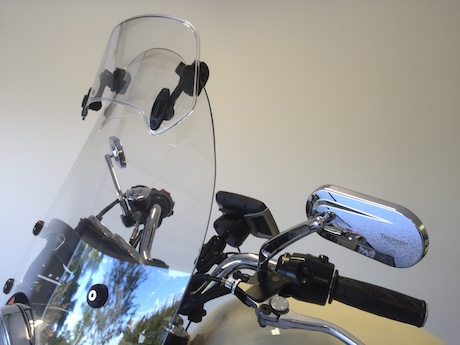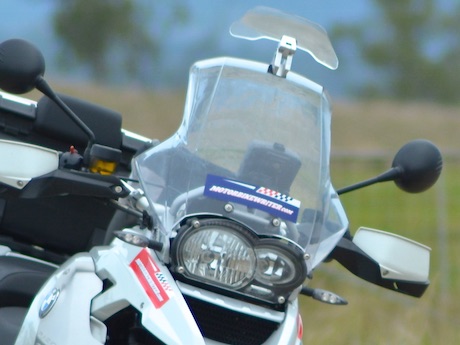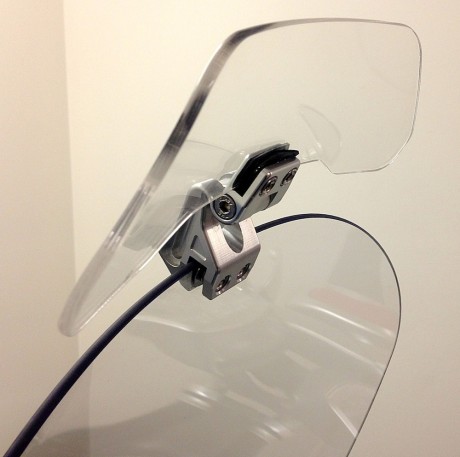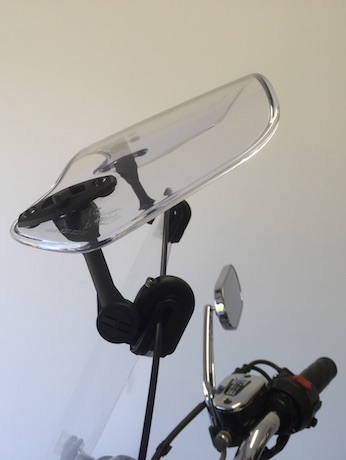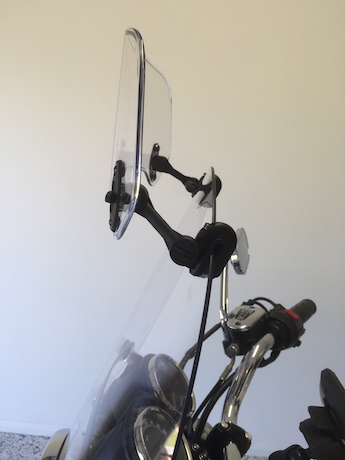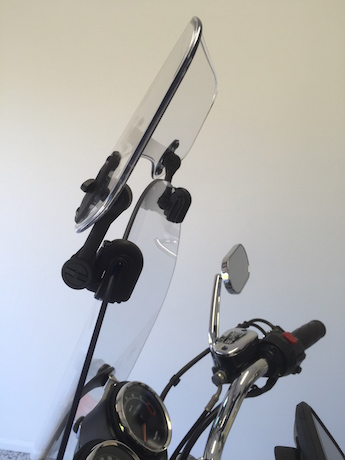The ideal windscreen is no screen at all, but if you must have a screen, an adaptable set-up is the best.
I have tried myriad factory and aftermarket windscreens, plus windscreen extensions and visors and have come to the conclusion that the ideal windscreen cannot be found.
Obviously, the best windscreen is a subjective thing based on type of bike, height of the rider, riding style and even environmental conditions.
But the best windscreen set-up is something that can be varied and I think I now have the best set-up on my Triumph Bonneville.
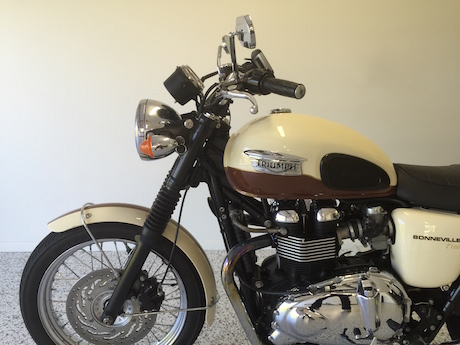
The Bonne doesn’t come with a windscreen, so I bought the factory quick-release windscreen. Like so many of these factory windscreens, it is very quick to attach and detach, leaving behind very little ugly fitting hardware.
Possibly the best of all is the screen on the Harley-Davidson Sportster SuperLow XL1200T which leaves absolutely no ugly fitting hardware whatsoever on the forks or frame.
But for my height of 6’1” (185cm), neither the Bonne nor SuperLow windscreens is tall enough.
So I have added a clamp-on spoiler.
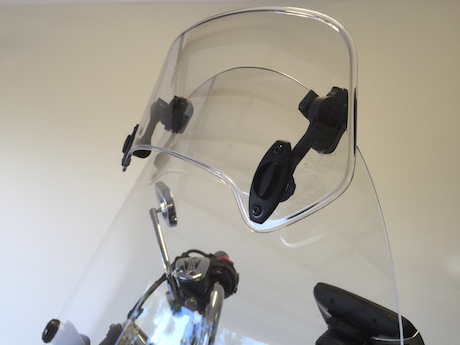
Now, in summer, I ride around without a screen except maybe on long trips.
In winter, I add the quick-release screen which is fine for keeping the cold and most rain off my chest and has limited buffeting around town.
When I tour in summer or winter, I add the spoiler for reduce buffeting and fatigue.
I’ve tried several different clamp-on spoilers and I can’t say which is the best as it depends on the size and shape of your windscreen.
You can also get bolt-on visors, but these leave ugly holes if you take them off. I also like the adaptability of a clamp system.
I used to use a Wunderlich visor which worked well on several different bikes such as my former BMW R 1200 GS. Read my review here. However, it looks a little out of place on big touring screens like the Suzuki Boulevard below.
The one I favour for the Bonneville is the MRA X-Creen which comes in clear or smoked and in varying sizes.
I chose the widest “touring” model to suit the wide Bonne screen. It cost $179.95 which is a bit expensive, but it’s fairly big (25x10cm) and offers almost complete protection from annoying, loud and fatiguing wind buffeting. it also keeps bugs off your helmet visor and the winter chill off your chest.
It comes as a bolt-on screen, but I bought the clamp kit adaptor for an extra $38.50.
This clamp has rubber grommets that protect your windscreen from scratching and four small allen bolts that hold it securely in place. Taking it off is a 30-second job.
That’s handy as I will be moving it from my bike to test bikes from time to time.
The visor has a double pivot arm so you can vary the forward distance from the screen, the height of the visor and the angle.
There are four levers you unlock so you can move it into the ideal position. I’ve found the ideal position for me up to 80km/h and a higher position for over 80km/h. It will go even higher, but it doesn’t have any more effect.
Besides, the higher position for highway touring still allows me to see over the top in the rain.
Now I’m no aerodynamics expert, but there is something about having a second visor section at the top of the windscreen that is better than simply having a taller windscreen.
It has to do with reducing the back pressure behind the windscreen that causes the buffeting. Instead, it directs a clean flow of air up behind the visor and over your head.
The only problem with a visor on top of a windscreen is that the extra weight makes the windscreen wobble and vibrate, especially at low revs and over bumps.
Make sure your windscreen is strong enough to tolerate this sort of flex.


